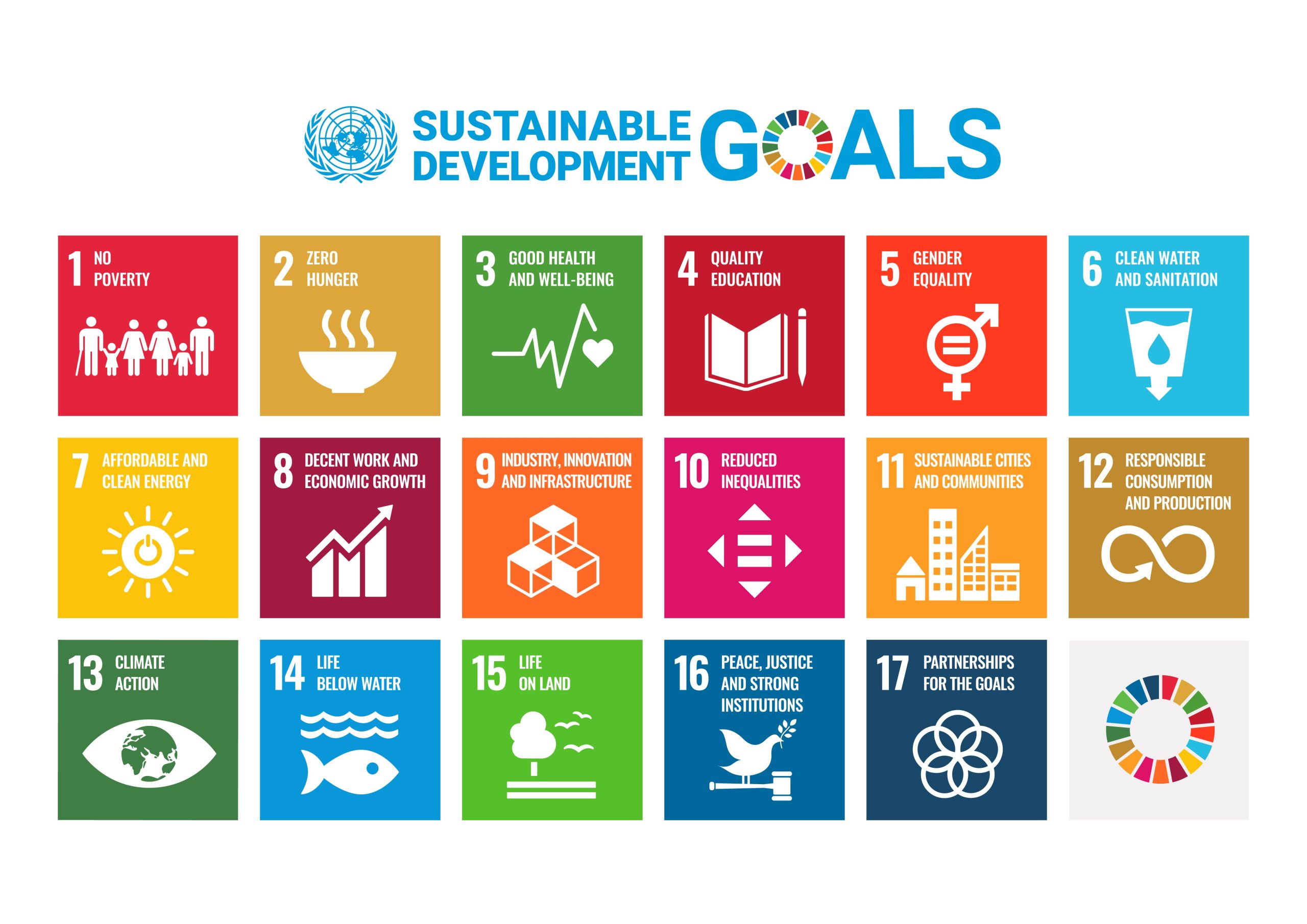
In 2015, all United Nations Member States adopted the 2030 Agenda for Sustainable Development, which the UN Department of Economic and Social Affairs calls a “blueprint for peace and prosperity for people and the planet, now and into the future. At its heart are the 17 Sustainable Development Goals (SDGs), which are an urgent call for action by all countries – developed and developing – in a global partnership. They recognize that ending poverty and other deprivations must go hand-in-hand with strategies that improve health and education, reduce inequality, and spur economic growth – all while tackling climate change and working to preserve our oceans and forests.”
Organizations, governments, and businesses worldwide use the SDGs as a framework for prioritizing efforts and communicating with stakeholders about the sustainability of their operations. See https://sdgs.un.org/goals for more information on the goals, specific targets within each SDG, and reports on the collective global progress toward these goals.
The Illinois Sustainable Technology Center (ISTC) Technical Assistance Program (TAP) makes companies and communities more competitive and resilient through sustainable business practices, technologies, and solutions. TAP works at the intersection of industry, science, and government to help organizations achieve profitable, sustainable results.
TAP efforts relate to several SDGs and targets, as outlined below. Please note that this mapping of our work to the SDGs does NOT in any way imply endorsement of our services by the United Nations; this is simply the result of an exercise to think about how we are contributing to global sustainability efforts as an organization. Our team has helped other organizations think through their alignment with the SDGs as part of their communication of sustainability programs and stakeholder engagement. Similarly, we wish to provide global context for our work.
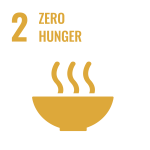 Zero Hunger
Zero Hunger
- Target 2.1: By 2030, end hunger and ensure access by all people, in particular, the poor and people in vulnerable situations, including infants, to safe, nutritious, and sufficient food all year round.
- Target 2.3: By 2030, double the agricultural productivity and incomes of small-scale food producers, in particular women, indigenous peoples, family farmers, pastoralists, and fishers, including through secure and equal access to land, other productive resources and inputs, knowledge, financial services, markets and opportunities for value addition and non-farm employment.
- Target 2.4: By 2030, ensure sustainable food production systems and implement resilient agricultural practices that increase productivity and production, that help maintain ecosystems, that strengthen capacity for adaptation to climate change, extreme weather, drought, flooding, and other disasters, and that progressively improve land and soil quality.
The Farm to Food Bank (F2FB) project (part of our Zero Waste program) addresses this SDG and targets.
Good Health and Well-being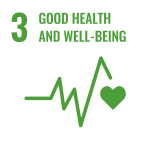
- Target 3.9 By 2030, substantially reduce the number of deaths and illnesses from hazardous chemicals and air, water, and soil pollution and contamination.
TAP’s Pollution Prevention services (P2, see https://tap.istc.illinois.edu/services/ and scroll down), Institutional Water Treatment (IWT) program, and Public Water Infrastructure (PWI) Plant Efficiency Program contribute to this SDG.
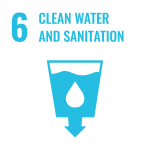 Clean Water and Sanitation
Clean Water and Sanitation
- Target 6.1: By 2030, achieve universal and equitable access to safe and affordable drinking water for all
- Target 6.3: By 2030, improve water quality by reducing pollution, eliminating dumping and minimizing release of hazardous chemicals and materials, halving the proportion of untreated wastewater and substantially increasing recycling and safe reuse globally.
- Target 6.4: By 2030, substantially increase water-use efficiency across all sectors and ensure sustainable withdrawals and supply of freshwater to address water scarcity and substantially reduce the number of people suffering from water scarcity.
- Target 6.b: Support and strengthen the participation of local communities in improving water and sanitation management.
TAP’s Pollution Prevention services (P2, see https://tap.istc.illinois.edu/services/ and scroll down), Institutional Water Treatment (IWT) program, and Public Water Infrastructure (PWI) Plant Efficiency Program contribute to this SDG.
Affordable and Clean Energy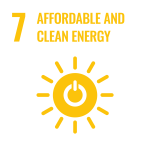
- Target 7.3: By 2030, double the global rate of improvement in energy efficiency.
- Target 7.a: By 2030, enhance international cooperation to facilitate access to clean energy research and technology, including renewable energy, energy efficiency, and advanced and cleaner fossil-fuel technology, and promote investment in energy infrastructure and clean energy technology.
TAP’s Comprehensive Assessments, Pollution Prevention assistance (see https://tap.istc.illinois.edu/services/), Public Water Infrastructure (PWI) Plant Efficiency Program, and Renewable Energy Equipment Recover-Reuse Program contribute to this SDG.
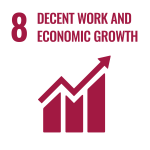 Decent Work and Economic Growth
Decent Work and Economic Growth
- Target 8.4: Improve progressively, through 2030, global resource efficiency in consumption and production and endeavor to decouple economic growth from environmental degradation, in accordance with the 10-Year Framework of Programmes on Sustainable Consumption and Production, with developed countries taking the lead.
All of TAP’s services, and our Zero Waste, Public Water Infrastructure (PWI) Plant Efficiency, and Institutional Water Treatment programs contribute to increased resource efficiency and more sustainable consumption and production.
Industry, Innovation and Infrastructure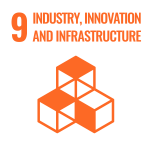
- Target 9.1: Develop quality, reliable, sustainable, and resilient infrastructure, including regional and transborder infrastructure, to support economic development and human well-being, with a focus on affordable and equitable access for all.
- Target 9.2: Promote inclusive and sustainable industrialization and, by 2030, significantly raise industry’s share of employment and gross domestic product, in line with national circumstances, and double its share in least developed countries.
- Target 9.4: By 2030, upgrade infrastructure and retrofit industries to make them sustainable, with increased resource-use efficiency and greater adoption of clean and environmentally sound technologies and industrial processes, with all countries taking action in accordance with their respective capabilities.
All of TAP’s services, and our Zero Waste, Public Water Infrastructure (PWI) Plant Efficiency, Institutional Water Treatment, and Renewable Energy Equipment Recover-Reuse programs contribute to more sustainable industry and resilient infrastructure.
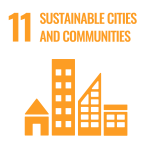 Sustainable Cities and Communities
Sustainable Cities and Communities
- Target 11.6: By 2030, reduce the adverse per capita environmental impact of cities, including by paying special attention to air quality and municipal and other waste management.
- Target 11.a: Support positive economic, social, and environmental links between urban, peri-urban, and rural areas by strengthening national and regional development planning.
- Target 11.b: By 2020, substantially increase the number of cities and human settlements adopting and implementing integrated policies and plans towards inclusion, resource efficiency, mitigation and adaptation to climate change, resilience to disasters, and develop and implement, in line with the Sendai Framework for Disaster Risk Reduction 2015-2030, holistic disaster risk management at all levels.
The Farm to Food Bank project; sustainability and climate planning assistance (aka, Resilient Solutions), Comprehensive Assessments, and Pollution Prevention services (see https://tap.istc.illinois.edu/services/), and our Zero Waste, Public Water Infrastructure (PWI) Plant Efficiency, Institutional Water Treatment, Renewable Energy Equipment Recover-Reuse and Illinois Coastal Management programs contribute to this SDG.
Responsible Consumption and Production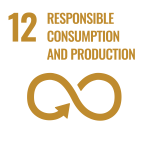
- Target 12.1: Implement the 10-Year Framework of Programmes on Sustainable Consumption and Production Patterns, all countries taking action, with developed countries taking the lead, taking into account the development and capabilities of developing countries.
- Target 12.2: By 2030, achieve the sustainable management and efficient use of natural resources.
- Target 12.3: By 2030, halve per capita global food waste at the retail and consumer levels and reduce food losses along production and supply chains, including post-harvest losses.
- Target 12.4: By 2020, achieve the environmentally sound management of chemicals and all wastes throughout their life cycle, in accordance with agreed international frameworks, and significantly reduce their release to air, water, and soil in order to minimize their adverse impacts on human health and the environment.
- Target 12.5: By 2030, substantially reduce waste generation through prevention, reduction, recycling, and reuse.
- Target 12.6: Encourage companies, especially large and transnational companies, to adopt sustainable practices and to integrate sustainability information into their reporting cycle.
- Target 12.7: Promote public procurement practices that are sustainable, in accordance with national policies and priorities.
- Target 12.8: By 2030, ensure that people everywhere have the relevant information and awareness for sustainable development and lifestyles in harmony with nature.
All of TAP’s services, as well as the Zero Waste and Institutional Water Treatment programs contribute to this SDG.
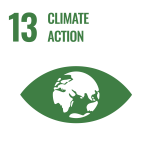 Climate Action
Climate Action
- Target 13.1: Strengthen resilience and adaptive capacity to climate-related hazards and natural disasters in all countries.
- Target 13.2: Integrate climate change measures into national policies, strategies, and planning.
- Target 13.3: Improve education, awareness-raising, and human and institutional capacity on climate change mitigation, adaptation, impact reduction, and early warning.
TAP services such as Comprehensive Assessments, Pollution Prevention assessments, and sustainability and climate planning assistance (aka, Resilient Solutions), as well as our Zero Waste and Renewable Energy Equipment Recover-Reuse programs, contribute to this SDG.
Life Below Water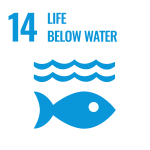
- Target 14.1: By 2025, prevent and significantly reduce marine pollution of all kinds, in particular from land-based activities, including marine debris and nutrient pollution.
- Target 14.2: By 2020, sustainably manage and protect marine and coastal ecosystems to avoid significant adverse impacts, including by strengthening their resilience, and take action for their restoration in order to achieve healthy and productive oceans.
- Target 14.3: Minimize and address the impacts of ocean acidification, including through enhanced scientific cooperation at all levels.
- Target 14.5: By 2020, conserve at least 10 percent of coastal and marine areas, consistent with national and international law and based on the best available scientific information.
TAP’s Pollution Prevention services and Illinois Coastal Management Program contribute to this SDG. The Zero Waste program also contributes, to the extent that zero waste efforts help prevent pollution of waterways.
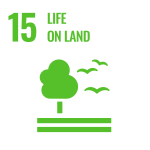 Life on Land
Life on Land
- Target 15.1: By 2020, ensure the conservation, restoration, and sustainable use of terrestrial and inland freshwater ecosystems and their services, in particular forests, wetlands, mountains, and drylands, in line with obligations under international agreements.
- Target 15.5: Take urgent and significant action to reduce the degradation of natural habitats, halt the loss of biodiversity, and, by 2020, protect and prevent the extinction of threatened species.
- Target 15.9: By 2020, integrate ecosystem and biodiversity values into national and local planning, development processes, poverty reduction strategies and accounts.
TAP’s Pollution Prevention and sustainability and climate planning assistance (aka, Resilient Solutions) services and the Illinois Coastal Management Program contribute to this SDG.
Partnerships for the Goals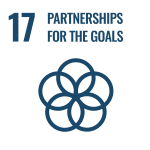
- Target 17.4: Enhance policy coherence for sustainable development.
- Target 17.16: Enhance the Global Partnership for Sustainable Development, complemented by multi-stakeholder partnerships that mobilize and share knowledge, expertise, technology, and financial resources, to support the achievement of the Sustainable Development Goals in all countries, in particular developing countries.
- Target 17.17: Encourage and promote effective public, public-private, and civil society partnerships, building on the experience and resourcing strategies of partnerships.
TAP works with government agencies at all levels to provide data and expertise that informs policies related to sustainability. Stakeholder engagement done as part of our projects and programs contributes to this SDG. See also https://tap.istc.illinois.edu/category/stakeholder-engagement/ for descriptions of some specific projects that involved stakeholder engagement. Much of our work involves public and private partnerships and collaboration.

